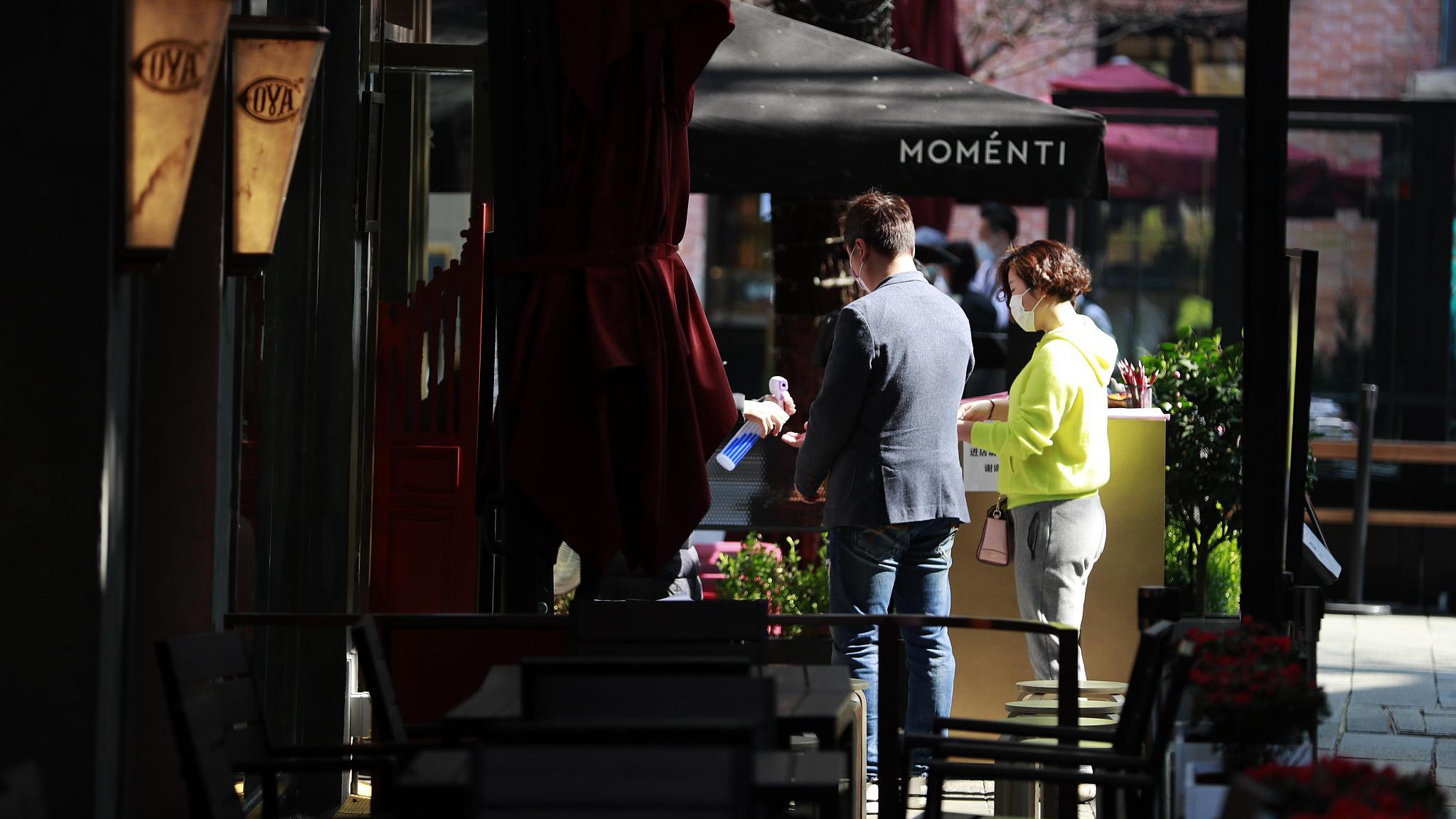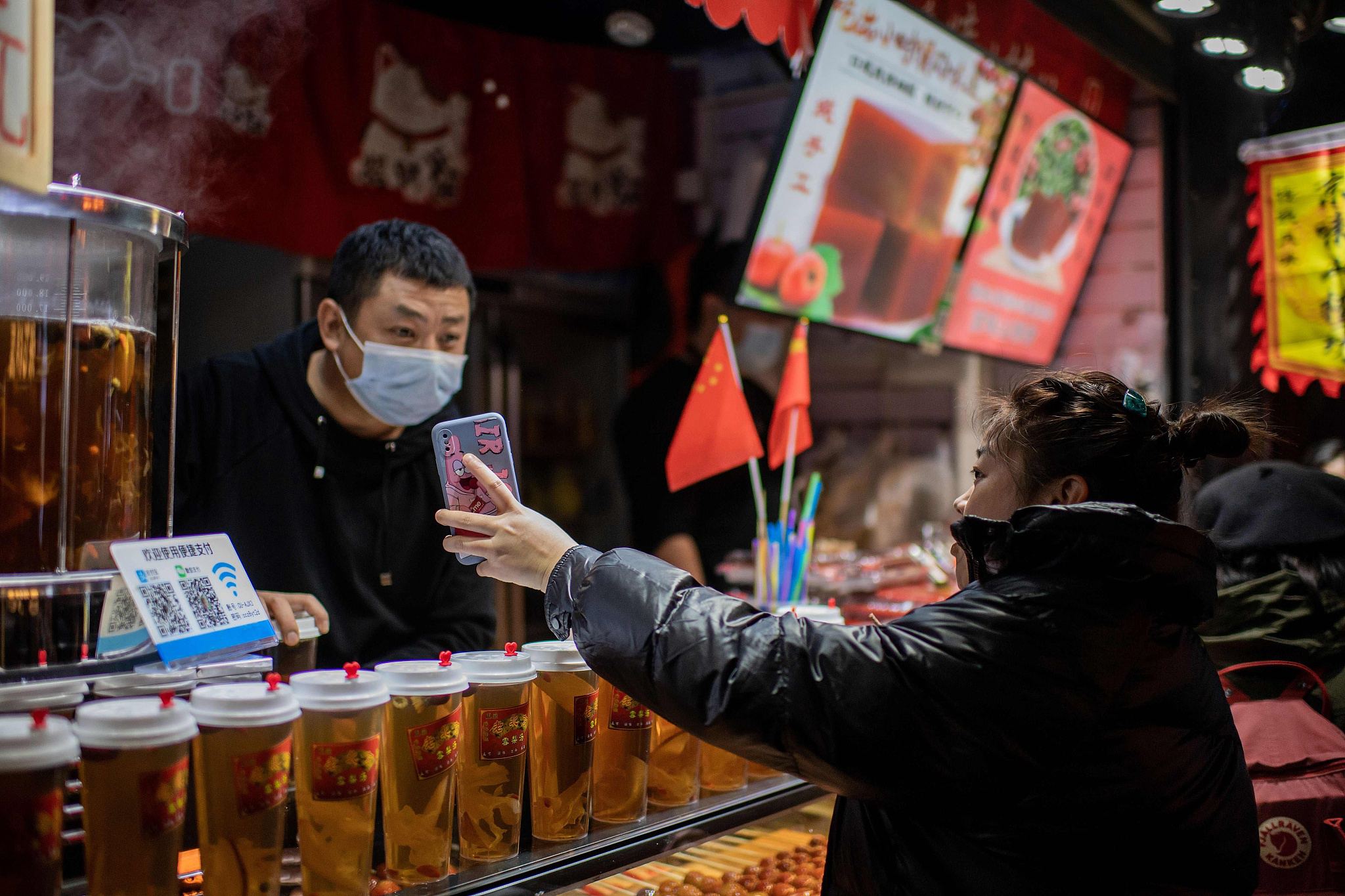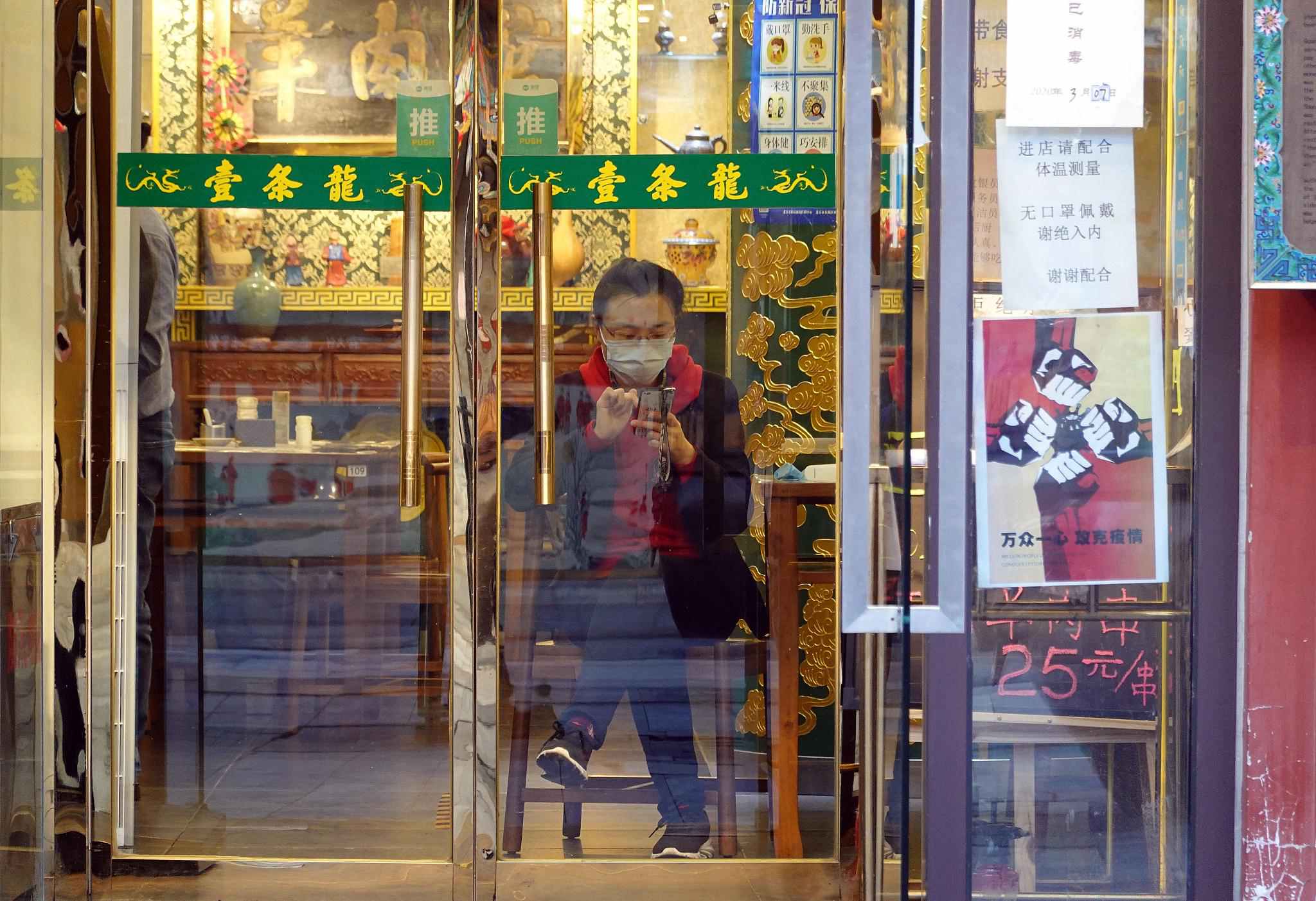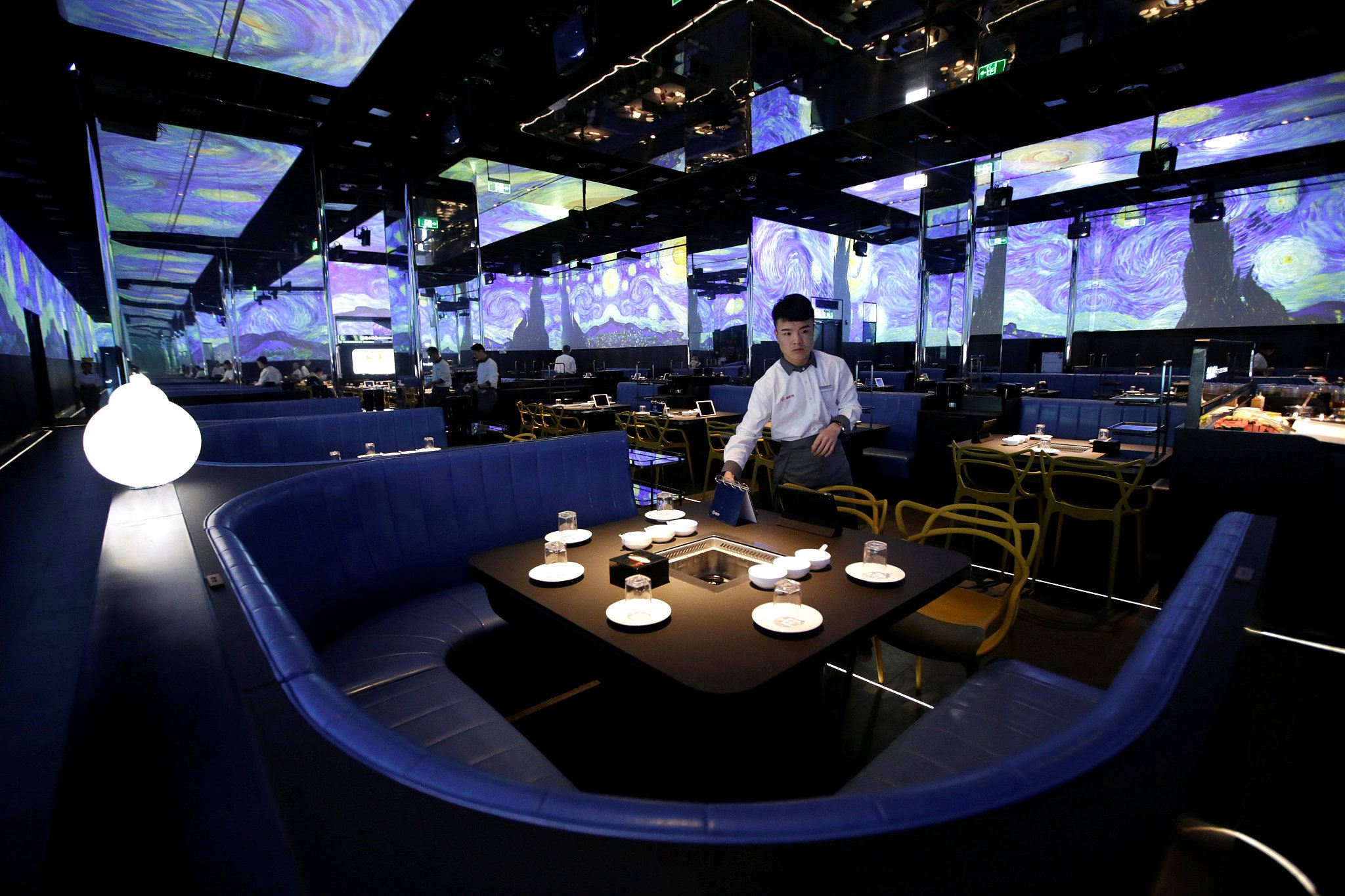
Customers disinfect their hands before entering a restaurant in Shanghai, February 26, 2020. /CFP
Customers disinfect their hands before entering a restaurant in Shanghai, February 26, 2020. /CFP
China is a nation of food enthusiasts, so when the COVID-19-battered catering industry showed positive growth last month – the first time since January – every takeout fan and dine-in lover felt a sense of achievement.
The country's catering sector raked in 43.7 billion yuan ($6.7 billion) in revenue in October, an annual growth of 0.8 percent, according to this month's data by the National Bureau of Statistics (NBS). It was the first uptick for the food service industry, which has been pummeled by lockdowns and business closures, since the beginning of the outbreak.
And while the news offers a glimmer of hope, the road to recovery is long. The pandemic has gnawed away at sales, and while people are back to thronging their favorite restaurants and taking advantage of food delivery apps, the question remains: How will the industry look like in the post-pandemic era?
In January and February, at least 93 percent of eateries closed their doors, according to a report published by the China Cuisine Association. In any other year, it would have been peak season for restaurateurs as people would be celebrating the Chinese New Year in style with banquets and reunions with family and friends around the dining table.
Last year, 15.5 percent of the catering industry's annual revenue (467.2 billion yuan, $71.2 billion) was generated during the Spring Festival holiday, according to NBS data.
At least 94 percent of customers canceled their Spring Festival Eve dinner plans and 78 percent of restaurants suffered a 100-percent loss. Only five percent of restaurants limited their loss to below 70 percent. The association's report placed the revenue loss of the industry at a whopping 500 billion yuan (US$76.1 billion).
"When the COVID-19 pandemic broke out, all the restaurants shut down. We were all panicking, with no solutions to deal with the blow," said Jia Guolong, chairman and founder of Xibei, a restaurant group known for its northwestern food, in an interview with China Media Group (CMG).

A customer pays for a drink using a QR code at a store in Beijing on October 28, 2020. /CFP
A customer pays for a drink using a QR code at a store in Beijing on October 28, 2020. /CFP
The brand, which operates 500 stores nationwide, had just enough money in February to keep going for three months, Jia said in the interview.
Different stakeholders in the catering industry felt the COVID-19 pinch differently. With dining rooms largely dark and empty, food distributors were out of business.
Cheng Yunfeng, chairman and founder of Lehe Food, an e-commerce food distribution channel, called that period "the darkest hour."
"In the food supply chain industry, in which our company is deeply rooted, a lot of small- and medium-sized companies suffered from weak cash flows. Every month, we'd receive several peers, begging us for a merger or acquisition."
As the problems deepened and multiplied, many tried to find a way out.
Zhang Yu, founder of food brand AGan Guokui, says she was impressed by the collective and individual revival efforts in the industry at the time.
"I could see how hard they tried to rescue themselves, with all the resources they had and all the possible solutions they could come up with. Some opened their arms wide to delivery options, some made breakthroughs in new retailing, and some reached deeper cooperative deals with their investors," Zhang said.
Their efforts were boosted with pro-business policies from the government, which rolled out 28 measures to support the catering industry. The included items to encourage and promote recovery, relieve financial pressure and boost consumption.
Rent waivers, tax discounts and subsidies were also on the menu to keep businesses afloat.

A waitress waits at the door of a restaurant in Beijing on March 3, 2020. /CFP
A waitress waits at the door of a restaurant in Beijing on March 3, 2020. /CFP
"In the first half of the year, China's reduced or exempted taxes reached 150.45 billion yuan ($22.89 billion). It is no small scale," noted Wang Jun, director of the State Taxation Administration.
"For the catering industry, value-added taxes were exempted for 2020, and for the small-sized and individual businesses, the enterprise income tax in 2020 could be delayed until 2021," Chang Hong with the Chongqing Jiangbei branch of the State Taxation Administration, told CMG.
Looking ahead
For those who made it through the crisis, the future holds opportunities and obstacles thanks to how the pandemic is inducing industry-wide changes.
"I believe that the catering industry is irreplaceable, though many people are worrying that the development of artificial intelligence and big data could finally bring to an end some traditional occupations," said Ren Tao, the president of Spicy and Joint, a Shanghai-based food brand. "I believe the catering industry is safe, because humans are social and restaurants meet the needs of humanity."
With the industry attracting new policies, investment and talent, insiders are seeking new ventures and possibilities for change.

Haidilao's first AI restaurant in Beijing. /CFP
Haidilao's first AI restaurant in Beijing. /CFP
"We've learned the lesson from the pandemic. I found that if a traditional industry, like us, relies on cash flow, we won't have the capacity to cope with a crisis like this. We need the backup of the financial market," said Jia, Xibei's chairman. "On the other hand, food security means even more to us."
Meanwhile, Zhao Jingqiao, executive director of Service Economy and Catering Industry Research Center of the Chinese Academy of Social Science (CASS), believes that the delivery service will become even more central to the catering industry in the post-pandemic era.
"The delivery expanded the service option of the industry, and diversified its services. It also increased profits and efficiency," said Zhao.
Many brands, such as hot pot chain Haidilao, are now delivering semi-finished products. The restaurant is also setting up more AI restaurants in which robots wait on tables.
An increasing number of restaurants were already considering introducing new technologies to their kitchens – the pandemic is only speeding up the process.

